Welcome to day three of Itasca State Park Week, the week that Exploring Minnesota’s Natural History celebrates the 123rd anniversary of Minnesota’s first state park by sharing early images of the park found within the natural history collections at the University Archives.
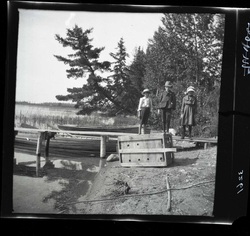 On Sunday we shared the story of the introduction of beaver into Itasca State Park in 1901 by way of an international gift. The container that the beavers arrived in was photographed in 1902 by Thomas Sadler Roberts, who traveled with his family to the Park that summer. The caption of the image, written on the envelope that encases the glass plate negative that the image was taken from, stated that in addition to the box and Roberts’s two children, there is a “boy from Heinzelman’s store” pictured.
On Sunday we shared the story of the introduction of beaver into Itasca State Park in 1901 by way of an international gift. The container that the beavers arrived in was photographed in 1902 by Thomas Sadler Roberts, who traveled with his family to the Park that summer. The caption of the image, written on the envelope that encases the glass plate negative that the image was taken from, stated that in addition to the box and Roberts’s two children, there is a “boy from Heinzelman’s store” pictured.
What was Heinzelman’s store?
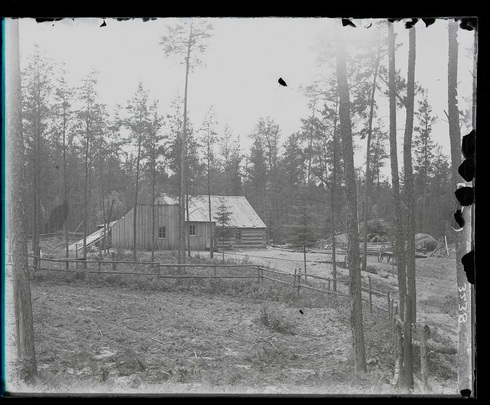
– Martin Heinzelman’s Store, June 1902, Itasca State Park
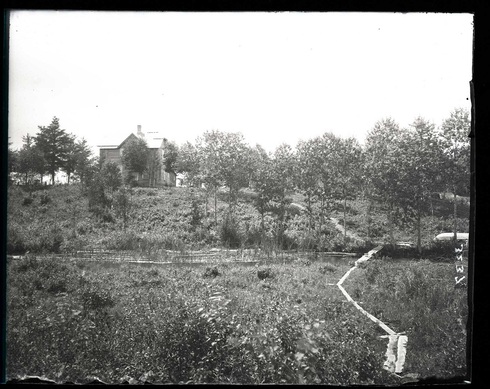
– Martin Heinzelman’s Residence at Itasca, June 1902, Itasca State Park
On their visit to Itasca State Park in the summer of 1902, Roberts and his family had the opportunity to meet some of the early settlers to the Itasca region. Martin Heinzelman, his brother George Heinzelman, sister Matilda (Heinzelman) Korth, and brother-in-law John Korth, originally from Wisconsin, moved to Itasca in 1899 and 1900 to homestead. John Dobie, in his book, The Itasca Story, included the following regarding Heinzelman:
“Martin Heinzelman came to Itasca in 1900 and settled a half mile north of the lake along the river. Like most settlers near the Park he began as a farmer and later opened a number of cabins for the accommodation of tourists. In December, 1909, Heinzelman was appointed Park Commissioner. In those days the commissioner received very little pay for his work. He was supposed to operate Douglas Lodge and could take any profit he made as a supplement to his salary. Most of the early superintendents did not do well financially because there were very few tourists. Heinzelman changed that by advertising the Park and its attractions…
The legislature of 1911 created the Minnesota Forestry Service and William T. Cox was appointed Chief Forester. In 1912 the Park was put under the jurisdiction of the Chief Forester. Heinzelman was relieved of his duties as Park Superintendent in 1912 but continued as manager of the lodge until 1914…”
In addition to photographing the Heinzelman properties, Roberts also captured the Korth residence. The negative that corresponds to this image is labeled, “First house on the Mississippi River, John Korth.” [Meaning the first house you would come upon along the Mississippi River when heading South from the outlet of Lake Itasca.]

– First house on the Mississippi River, John Korth, July, 1902, Itasca State Park
Roberts and his eldest son Tom spent time exploring the lakes and streams found within the Park with George Heinzelman.
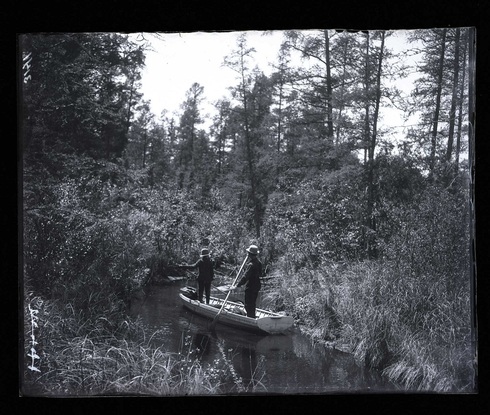
– Scene on Nicollet Creek with Tom Roberts and Mr. George Heinzelman, July 3, 1902, Nicollet Creek, Itasca State Park
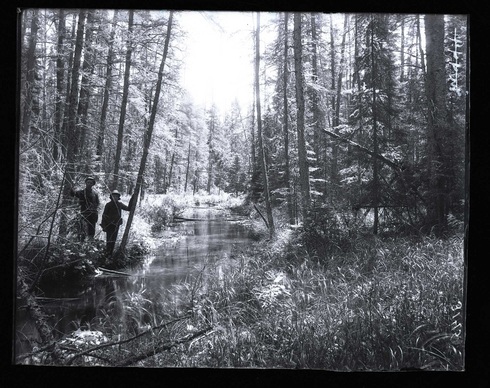
– View on the Creek with Tom Roberts and Mr. George Heinzelman, guide, July 7, 1902, Nicollet Creek, Itasca State Park
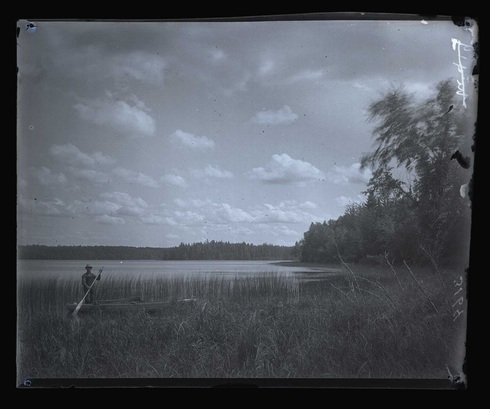
– Elk Lake, George Heinzelman in boat, July 7, 1902, Elk Lake, Itasca State Park
Martin Heinzelman continued to operate tourist cabins at Itasca State Park throughout the first half of the 20th century. The Headwaters Inn, as his property was called, featured a bridge over the Mississippi River, and contained multiple cabins on the site. An advertisement for the Headwaters Inn, found in the Saturday, June 30, 1934 edition of the Winnipeg Free Press, stated, “Log cabins for light housekeeping. Meals served at Inn when desired. Gas, Oil, Groceries and Souvenirs. ‘You will like Headwaters Inn.’“
Martin Heinzelman’s house and store, as well as his sister and brother-in-law’s cabin, the Korth residence, no longer stand at Itasca State Park. In an oral history interview with longtime Park employees Dorothy and Alvin Katzenmeyer, conducted by the Minnesota Historical Society in 1993, Mr. Katzenmeyer shared his opinion on the loss of the buildings and changes to the Park:
“Mr. Katzenmeyer: Well, one of the changes that I saw was made just about the time I retired and was ready to quit was that all of a sudden they became concerned about some of the old buildings… and a lot of the buildings they just let deteriorate because they said it was cheaper to build new than it was to keep for upkeep. That was their philosophy. As a result, a lot of the old buildings have gotten in bad repair because of that. And they should have been repaired and kept up because there’ll never be buildings like them again…”
“… that big inn, Heinzelman’s inn, was a landmark, you know, in the community here. And the home that Elva Traun was born in down there and that was just a little country farmhouse, you know what I mean (this was the John Korth place mentioned before)… and it was the first white settler on the Mississippi River and it should have been, I always felt it should have been preserved and it would have cost very little to have preserved it, you know, because they could have had a little exhibit in there, they could have had old furniture and things in there and… people go and look at it, and as a result it would be used and would be open and would be dry, you know what I mean… and it could have been preserved forever, you know, but instead of that they just bulldozed it down and covered it up, and that was the end of it, you know.”
Though the physical structures of Heinzelman’s house and store, and the Korth residence — the first house built along the Mississippi River — were not preserved as Alvin Katzenmeyer had wished, the images of those structures, taken from materials within the Bell Museum of Natural History records, help to preserve the memory of Itasca’s early settlers and the structures that they lived in.